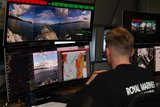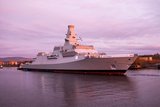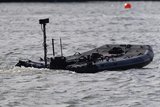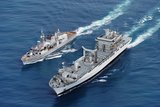Sea Venom/ANL completes second firing
MBDA has successfully completed the second development firing of the Sea Venom/Anti-Navire Léger (ANL) missile, MBDA announced on 31 May.
The missile was fired from a DGA Panther test helicopter at Ile Du Levant in southeast France.
The test firing highlighted Sea Venom/ANL’s lock on after launch capabilities and validated the missile’s low-altitude, sea-skimming flight capability, the effectiveness of the data link between the missile and helicopter and Sea Venom/ANL’s autonomous guidance capability, using images from its infrared seeker.
In the UK, the ANL missile will be used from the AW159 Wildcat helicopter, while France will operate the missile from its future Light Joint Helicopter.
The missile is designed to enable the helicopters of both countries’ navies to deal with a range of threats including fast moving patrol boats, corvettes and coastal targets.
MBDA was awarded the production contract for Sea Venom/ANL in March 2014.
Related Equipment in Defence Insight
More from Naval Warfare
-
![NATO naval exercises map out future USV requirements but raise questions on acquisition]()
NATO naval exercises map out future USV requirements but raise questions on acquisition
Uncrewed surface vessels have shifted from a desirable capability to a critical one for navies. But should these systems be bought outright, rented as a service or rapidly built using commercial off-the-shelf components?
-
![UK MoD’s confirmation of MBDA missile for Type 26 points to more European collaboration]()
UK MoD’s confirmation of MBDA missile for Type 26 points to more European collaboration
The Type 26 will also be fitted with the Sea Ceptor vertically launched air defence system that can fire CAMM missiles and a 24-cell Mk 41 vertical launch system that can fire the Tomahawk land-attack cruise missiles, anti-submarine rockets and long-range anti-ship missiles.
-
![Second Royal Canadian Navy Joint Support Ship is on schedule to be launched mid-2026]()
Second Royal Canadian Navy Joint Support Ship is on schedule to be launched mid-2026
While the first Joint Support Ship is currently in the final stages of outfitting, the second one is on schedule for launching next year.





















